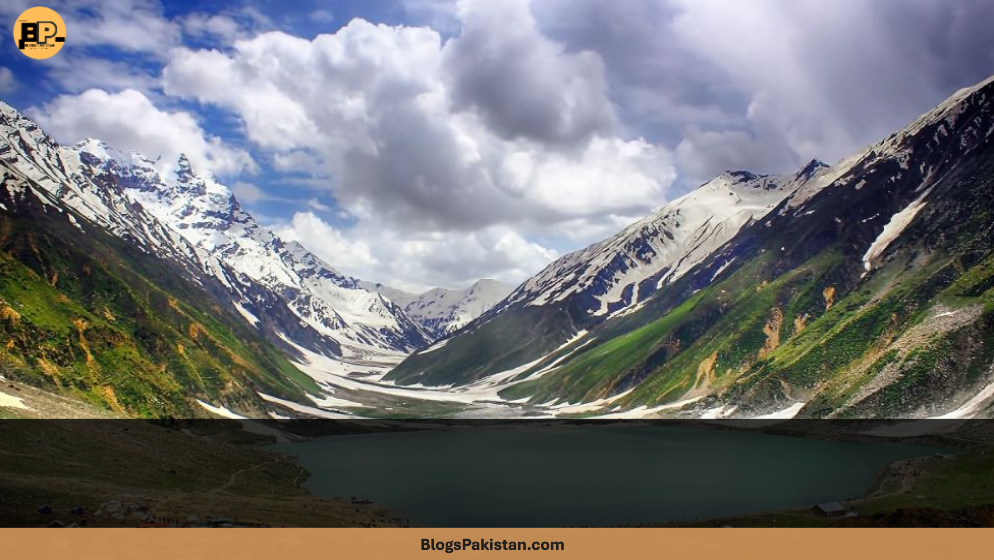The Plot Twist in Pakistan’s Favorite Hill Stations
Pakistan : Just as you were dreaming about building your very own mountain café in Naran or a lakeside cottage in Kaghan, the government of Khyber Pakhtunkhwa (KP) dropped a plot twist big enough to rival any Bollywood interval. Yes, you read that right: KP has officially slammed the brakes on all new construction at its beloved tourist destinations. That means all those fancy new hotels, restaurants, and “Instagrammable” treehouses? Put on hold, at least for now.
Let’s unpack what’s happening, why the government decided to go all “protect the mountains,” and what this means for travelers, investors, and the future of tourism in Pakistan and even India.
BREAKING: No More Construction Chaos
On an otherwise ordinary Tuesday, the Chief Secretary of KP made an announcement that sent property developers scrambling for their chai cups. Effective immediately, there’s a temporary ban on new construction at all major tourist spots across the province. And if you’re one of those folks who already bagged a No Objection Certificate (NOC) for your dream project? Sorry, those have all been revoked too. It’s like a game of Monopoly where the banker suddenly snaps up all the deeds and says, “Let’s try again next year.”
What’s Really Behind the Ban?
Before you think this is just another government move to make life difficult, let’s talk motivation. KP’s scenic gems—from the foggy valleys of Kaghan and Naran to the pine-covered slopes of Swat—have been facing a building boom that would make even Dubai jealous. While it’s great for business, all that construction has started to chip away at the very reason people come here: the jaw-dropping natural beauty.
Overflowing drains, roadside encroachments, and random high-rises? Not quite the Himalayan fantasy you signed up for. The government says this ban is about two things: preserving nature and protecting the environment, so future generations (and yes, Instagrammers) can enjoy these spots without having to Photoshop out a half-built shopping mall.
What Happens to the Old NOCs?
Here’s the spicy part. Not only has the KP government stopped issuing new NOCs, but they’ve also canceled all the ones handed out before. In other words, if you thought you were about to break ground on that luxury lodge, you might want to keep your shovel in the shed. Authorities are reviewing each previously approved project for compliance with master plans and environmental guidelines—a move that’s rattling a few investment portfolios, but probably making local wildlife do a happy dance.
Drainage, Master Plans, and the Quest for Order
It’s not just about pretty views, though that’s a huge part of it. KP’s top officials noticed that the infrastructure in these tourist hubs is, let’s say, less ‘Swiss Alps’ and more ‘DIY gone wrong.’ Inadequate drainage means every monsoon turns roads into rivers, and unchecked building has led to encroachments that make traffic jams a daily sport.
From now on, tourist authorities in hotspots like Kaghan, Naran, and other picturesque places will have to operate under strict master plans. Think of it as a board game where you can’t just put a hotel wherever you want; you’ve got to follow the rules, or you’re out.
Why Is This Good News for Nature (and Tourists)?
For everyone who loves a good selfie with a waterfall (without a concrete mixer lurking in the frame), this is the kind of step we should all applaud. The government’s move aims to keep the mountains green, the rivers clean, and the air as fresh as a morning in Murree. By pausing new construction, KP is giving itself time to figure out sustainable development—meaning the next round of tourism investments will (hopefully) work with nature, not against it.
What Does It Mean for Travelers from Pakistan and India?
If you’re planning a trip to Swat, Chitral, or the famed Kaghan Valley, you might notice fewer new hotels and shopping plazas popping up overnight. That could mean a more authentic mountain experience, fewer crowds at the latest “viral” café, and maybe—just maybe—better views for everyone. Of course, things could get a little more competitive when booking rooms, but think of it as a good excuse to finally try camping or staying at a family-run guesthouse.
For Indian travelers, this is a sign that South Asia’s tourism boards are beginning to wake up to the long-term value of environmental conservation. After all, what’s the point of a million Instagram likes if the waterfall is full of litter and the hills are covered in concrete?
Investors, Don’t Panic—Planning Is the New Cool
If you’re an investor or business owner with dreams of opening the next big resort, don’t sell your shares just yet. The KP government isn’t banning investment, it’s just calling for a time-out. The message is clear: sustainable, well-planned projects are the way forward. Once the master plans are reviewed and environmental rules tightened, there will be space for growth—just not the Wild West style that’s caused issues in the past.
Could This Become a Trend Across South Asia?
Pakistan isn’t alone in this rethink. From the hills of Himachal Pradesh in India to the beaches of Sri Lanka, governments are waking up to the dangers of overdevelopment. KP’s bold move could inspire other provinces—and even Indian states—to put the brakes on haphazard construction. The race is on to see who can protect their natural treasures best, and travelers from both sides of the border stand to benefit.
The Bottom Line: Nature First, Construction Later
In a world where it’s all too easy to swap greenery for grey concrete, KP’s construction ban is a breath of fresh mountain air—literally. It’s a call to everyone (investors, tourists, governments) that natural beauty is the main attraction, and it’s up to us all to keep it that way.
So, next time you’re tempted to build a coffee shop with a killer view, remember: sometimes the best way to enjoy the mountains is to leave them just as you found them. Because a selfie on a pristine hilltop? That’s priceless.










